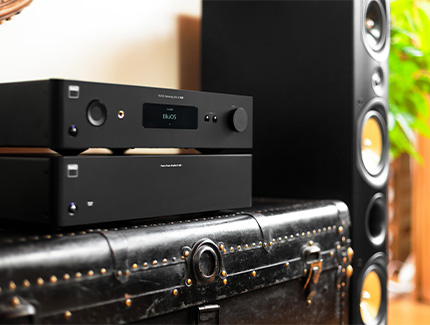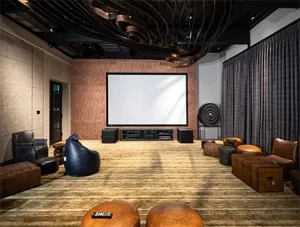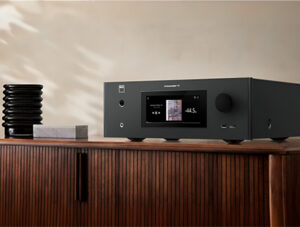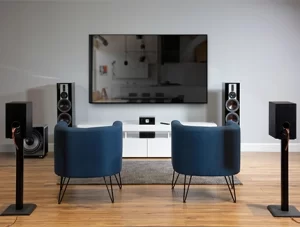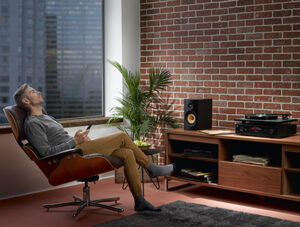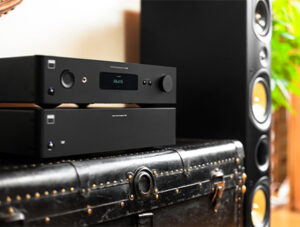The ability to play music throughout your home, seamlessly transitioning from room to room without missing a beat, is one of the most popular smart home upgrades for homeowners today. Multi-room audio systems allow you to enjoy high-quality sound everywhere in your house, whether for background music at a dinner party or an immersive surround-sound movie night. A multi-room AV receiver is the heart of this setup, giving you centralized control and delivering audio to multiple zones within your home.
In this guide, we’ll explore the fundamentals of setting up a multi-room AV receiver system, discuss essential considerations, and share tips for creating a smooth, whole-house audio experience.
1. What is a Multi-Room AV Receiver?
A multi-room AV receiver is an audio-video receiver that allows you to distribute sound across different rooms or “zones” in your home. Unlike traditional receivers designed for single-room setups, multi-room AV receivers are built to manage audio (and sometimes video) sources and direct them to various areas. This means that you can stream different music to different rooms or the same playlist across all zones from one central hub.
Multi-room receivers make it simple to control volume, audio sources, and even switch between different audio zones, making them a versatile solution for whole-house audio systems. Here’s why they’re a popular choice:
- Centralized Control: A single AV receiver to control audio across multiple rooms simplifies management.
- Source Flexibility: Play different sources simultaneously, so one person can watch TV in the living room while someone else listens to music in the kitchen.
- High-Quality Sound: These receivers are designed to support high-definition sound, making them ideal for music lovers and audiophiles.
2. Choosing the Right AV Receiver for Multi-Room Audio
Selecting the right AV receiver is crucial for achieving seamless audio quality across multiple rooms. Here are some essential features to consider:
- Number of Zones: Receivers often support 2 to 4 zones, each representing an area or room where you can play audio independently. Choose a receiver with enough zone support to cover your desired areas.
- Wattage: The power of your receiver determines the quality and volume of sound it can produce. Look for a receiver with sufficient wattage to fill your rooms with sound without distortion.
- Multi-Source Capability: This feature allows you to play different sources in each zone, so you’re not limited to a single audio stream.
- Connectivity: Look for modern receivers with Wi-Fi, Bluetooth, and HDMI support for easy device pairing, streaming, and control.
- Voice Control Compatibility: AV receivers that work with Alexa, Google Assistant, or Siri can offer hands-free operation, adding an extra layer of convenience.
Top Picks for Multi-Room AV Receivers:
- Yamaha RX-A3080 – A powerful choice with multiple zones, high-resolution audio, and wireless streaming capabilities.
- Denon AVR-X3700H – Supports three zones with robust power output and voice assistant compatibility.
- Marantz SR6015 – Known for superior sound quality and flexibility, ideal for audiophiles looking for a multi-room setup.
3. Planning Your Multi-Room Audio Setup
Before setting up a multi-room AV receiver system, it’s important to plan out the space where audio will be distributed and how you’ll control the system. Here are the steps to consider when planning:
- Identify Your Zones: Decide which rooms or outdoor areas you want to include. Some popular areas include the living room, kitchen, bedrooms, patio, and bathrooms.
- Consider Wired vs. Wireless: Wired speakers provide more consistent sound quality, but they require a greater installation effort. Wireless options are easier to set up but may experience occasional signal dropouts.
- Control Preferences: Decide whether you’ll primarily use a smartphone app, physical remote, or voice commands to control the system. Make sure your receiver supports your preferred control method.
- Audio Source: Identify what sources you’ll be using (e.g., streaming services, TV, CD player). For whole-house audio, streaming services are popular for their convenience and variety.
Pro Tip: Group rooms where you’d like synchronized audio into the same zone, such as the kitchen and dining room. This allows you to create consistent audio in rooms with shared spaces.
4. Setting Up Your Multi-Room AV Receiver
Once you’ve planned your zones, it’s time to set up your multi-room AV receiver. Here’s a step-by-step guide to help you get started:
Step 1: Position Your AV Receiver
Place the receiver in a central location that allows easy access to all zones. A media room or living room entertainment center is ideal. Ensure there’s sufficient ventilation and avoid stacking devices on top of the receiver.
Step 2: Connect Your Speakers
If using wired speakers, connect each one to its designated port on the receiver. For wireless speakers, connect them through the receiver’s Wi-Fi or Bluetooth options, following the device’s pairing instructions.
Step 3: Configure Zones
Set up zones on the receiver’s control panel or app. Assign speakers to each zone according to your floor plan and preferences.
Step 4: Source Input Configuration
Connect all desired audio and video sources to the receiver’s input ports, such as HDMI, AUX, or optical. This could include your TV, streaming devices, gaming consoles, and Blu-ray players.
Step 5: Test Each Zone
Test each zone individually by playing a different audio source in each room. Adjust the volume and ensure that audio quality is consistent across all zones.
Step 6: Customize with a Control App
Many AV receivers have companion apps that allow you to control the entire system from your smartphone. Download the app and test functions like switching sources, adjusting volume, and activating zones.
5. Control Options for Multi-Room Audio
A multi-room AV receiver setup provides flexibility with control options. Here are the main methods available:
- Smartphone Apps: Most modern AV receivers have apps that allow full control over zones, volume, and source selection. Yamaha MusicCast, Denon HEOS, and Sonos S2 are popular options.
- Voice Control: Voice commands can streamline control when your hands are full. Receivers with Alexa, Google Assistant, or Siri support enable hands-free control over music, volume, and even zone selection.
- Remote Control: Traditional remotes work for basic controls and are often included with the receiver. Many universal remotes can also control multiple devices within your audio system.
6. Optimizing Audio Quality Across Zones
To achieve balanced, high-quality sound in each room, consider these tips:
- Speaker Placement: Position speakers strategically for optimal sound coverage in each room. Wall-mounted speakers or ceiling speakers work well in rooms with limited space.
- Volume Levels: Set volume levels individually for each zone to match the room size and purpose. For instance, the living room might require a louder setup than the bedroom.
- EQ Settings: Many AV receivers offer equalizer settings that allow you to customize sound for each room. Experiment with these to get the best bass, treble, and mid-range for different spaces.
Pro Tip: For a uniform audio experience, consider matching speaker models across all zones. This provides consistent sound quality, even as you move between rooms.
7. Expanding Your Multi-Room Setup
If you’re thinking about expanding your multi-room system in the future, here are some considerations:
- Additional Speakers: As your setup grows, you can add more speakers to your existing zones or create new ones. Make sure your receiver supports additional zones before expanding.
- Outdoor Zones: Consider extending audio to outdoor areas like patios or balconies. Choose weatherproof speakers designed for outdoor use to maintain sound quality.
- Home Automation Integration: Integrate your AV receiver with home automation systems like SmartThings or Apple HomeKit for added control. This allows you to combine audio settings with other smart home devices, such as lighting and security systems.
8. Troubleshooting Common Issues
Multi-room audio setups can occasionally face connectivity or performance issues. Here are common problems and solutions:
- Audio Delays: If you experience audio lag between zones, check if there’s a delay in the connection. Many receivers have a “lip-sync” adjustment to sync audio and visuals.
- Signal Dropouts: Wireless speakers may lose connection occasionally. Ensure your router is positioned to cover all zones and consider a Wi-Fi extender if necessary.
- Volume Variability: If sound levels vary drastically between rooms, adjust each zone’s EQ settings to balance the sound output.
Conclusion:
A multi-room AV receiver setup is the ideal solution for whole-house audio, providing control and flexibility that make it easy to enjoy music or other audio throughout your home. With a well-planned setup, proper speaker placement, and the right control methods, you can transform any space into an immersive audio experience. Whether it’s background music or theater-quality sound, a multi-room audio system brings convenience and entertainment into every corner of your home.

